The initial goals I set for myself (see my previous post) helped to improve my diet and reduce the isolation that had dominated my life during the coronavirus lockdown. I had seen some really good examples of mental health bingo, which is basically a layout of lots of examples of self-care and fun activities that you’re supposed to cross off as you complete them. There’s lots of examples on Pinterest and Instagram.
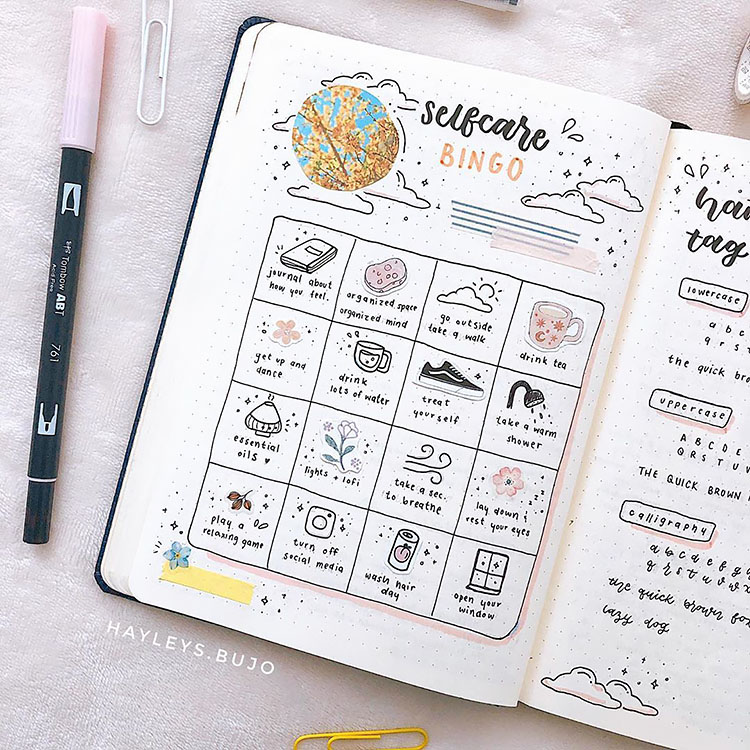
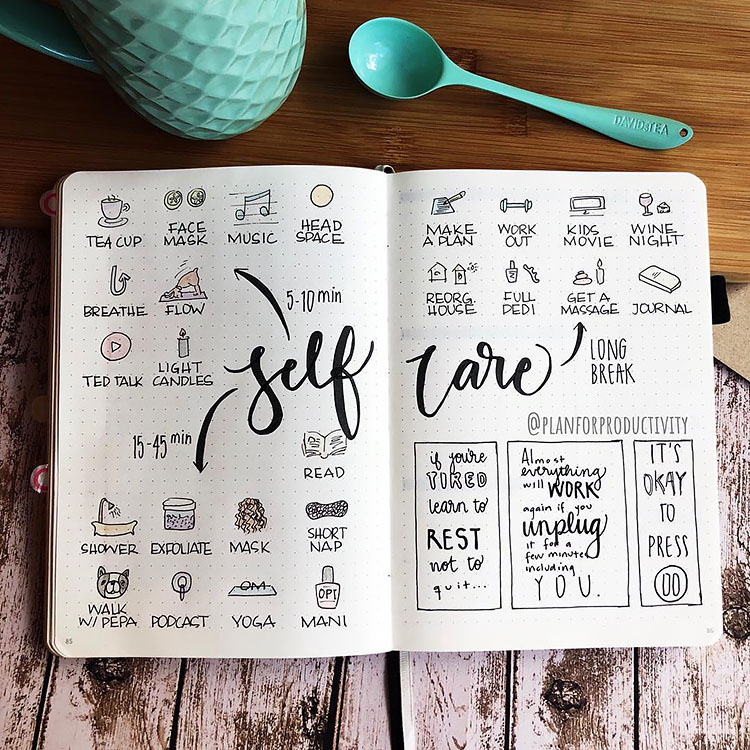
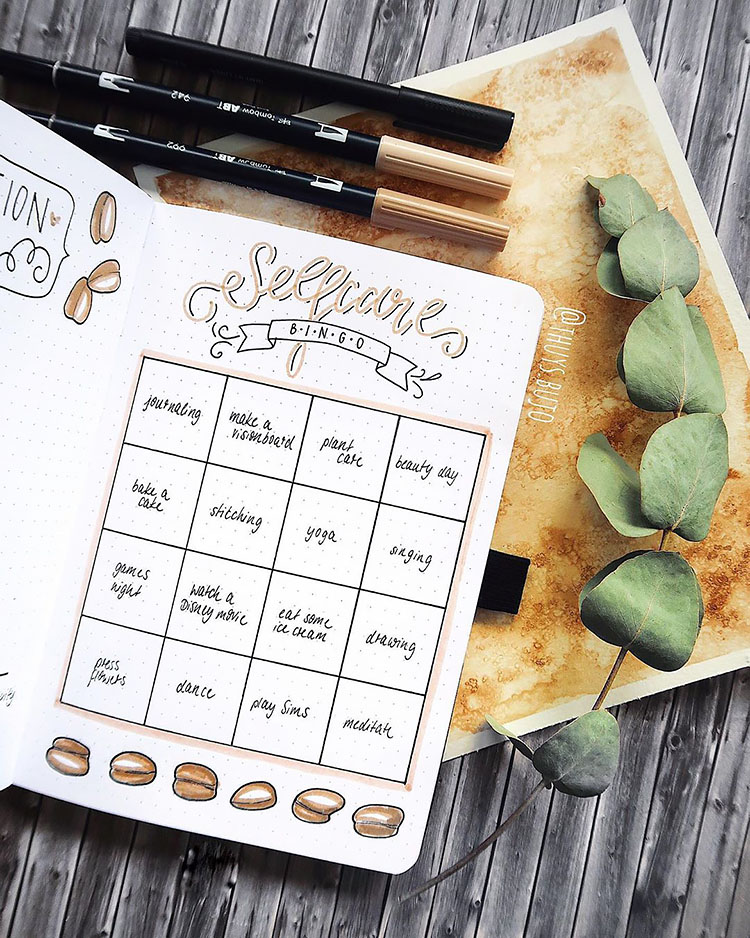
These spreads motivated me to create my own form of a mental health bingo that set real targets for the month, instead of just having a tracker that I might mark off and even then usually only towards the end of the month. I kept a basic mood tracker and trackers for my tablet, cuddling the dog and study, because they were things I needed to do daily or at least regularly. Then I wrote myself a long list of things I could do for myself that would make me feel good and narrowed that down to 8-10 to add to my spreads. The aim was to do each activity at least once, but there was always the option to do them more than once.
First and foremost was calling and going out with friends. It’s amazing how much stress it can cause, unknowingly, to be constantly checking social media, so a big goal was to have a day off every now and then and not even look at my phone once all day. I love having flowers to brighten up my house and my day, so this target was a must. There were a few targets that were designed to make me relax without a screen, including knitting and reading in bed. There were some goals that would encourage me to do something with my husband, including eating out and playing board games (I could play board games for hours on end, but no-one seems to be interested!), and finally, I added a target to do a task that I’d been putting off, like my tax return, because knowing you have that task hanging over your head contributes to feelings of stress.
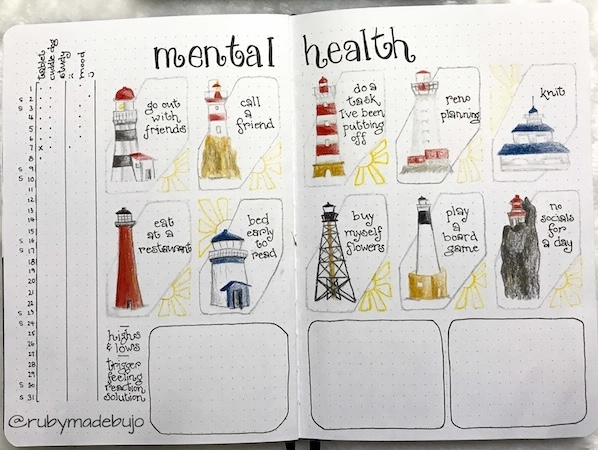
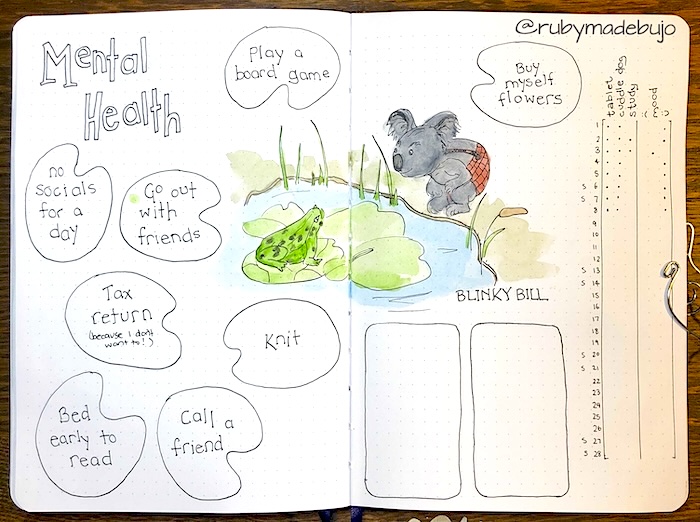
Each mental health spread has another important feature that I’d tried earlier on a ‘test’ spread – recording events that resulted in mood highs and lows. A lot of books that talk about how to treat depression recommend a similar process where you note down what happened to put you in a very good or bad mood, how that event made you feel, how you reacted to that feeling and how you resolved the situation (if you did).
For instance, someone you don’t know trolls you on social media (trigger). You immediately get a sinking feeling and worry whether you should have posted. Your reaction is to lie awake worrying about the post and response and you might even avoid social media for a while. The solution ends up being to delete the negative comment and talk about the experience with your counsellor.
I’ve found this spread to be the best combination of self-care items for me. The tracking of essential items, the motivation to do things for myself and keeping a record of triggers and responses to discuss with my counsellor has been really useful and effective.


Pingback: January 2021 Lighthouses – The Useful Journal